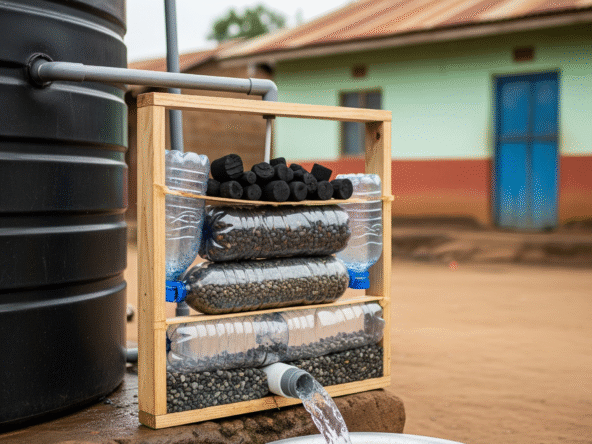In both rural and urban parts of Kenya, water storage tanks have become essential infrastructure for homes, rental plots, and farms. But to truly optimize their use whether it’s a 5000-litre Kentank, a 1000-litre IBC tank, or even a concrete tank you need a solid and durable tank stand.
This guide walks you through how to construct your own DIY tank stand, explains the best materials to use, and outlines safety and structural tips for ensuring stability under Kenyan weather and soil conditions.
1. Why Build Your Own Tank Stand?
Although prefabricated steel stands are available in the market, many Kenyans prefer to build their own for several reasons:
- Cost savings: DIY builds are often cheaper, especially in rural areas with access to local materials.
- Customization: You can tailor your stand to suit your tank size, land slope, and elevation needs.
- Flexibility in materials: From treated timber and steel to masonry blocks and concrete, you can work with what is most available.
For homes in flood-prone zones, first check Flood-Proof Water Storage in Kenya to make sure your entire system is protected from seasonal damage.
2. Choosing the Right Material for Your Stand
Different sites require different materials depending on tank size, soil type, and budget.
| Material | Pros | Best For |
|---|---|---|
| Timber | Affordable, easy to assemble | Temporary or short-term setups |
| Steel | Strong and space-saving | Urban homes with minimal land |
| Concrete | Extremely durable and flood-resistant | Large tanks and permanent installations |
| Masonry blocks | Stable, affordable, locally sourced | Ground stands or low-elevation platforms |
If using timber, select moisture-resistant species. Learn more in Best Timber Options for Wet Regions in Kenya.
3. Step-by-Step Guide: Timber Tank Stand for Small Tanks
Here is a basic setup for a timber stand that can hold a 1000 to 2000-litre tank:
What You’ll Need:
- 6 to 8 treated timber posts (4″ × 4″)
- Timber planks for braces and platform
- Nails, bolts, steel brackets, hammer, and spirit level
- Concrete for anchoring support posts
Construction Steps:
- Mark and clear the site, laying out a square base of around 1.5m × 1.5m.
- Dig holes about 2 feet deep for each support post.
- Secure posts with concrete, ensuring they are vertically aligned.
- Attach cross-bracing between posts horizontally and diagonally for rigidity.
- Construct the platform using timber planks to support the tank.
- Add access features, such as a ladder or stairs if elevated.
If your tank is above 3000 litres, consider a steel or concrete stand to handle the weight over time.
4. Tips for Ensuring Strength and Safety
- Always reinforce joints with steel angles or metal plates.
- If relying on gravity-fed pressure, ensure the platform is at least 1.5 to 2 metres high. Learn more from Gravity-Fed Tank Setups in Kenya.
- Anchor the base higher than average flood level to prevent waterlogging or tank tipping.
- For plots with sloped terrain, refer to Building on Sloped Plots in Kenya.
5. When to Build a Ground-Level Stand
A ground-level tank stand works best if:
- You’re using a pressure pump to distribute water
- You live in an extremely windy or flood-prone area
- You want easier access for cleaning and inspection
Always construct a concrete slab or compacted base to prevent the tank from settling unevenly or tipping. Cleaning guidelines are available in How to Clean and Maintain Household Tanks.
6. Setting Up for Multiple Tanks
If you are installing two or more water tanks, plan your stand accordingly:
- Increase platform width and number of support posts
- Connect tanks using overflow pipes and valves
- Automate refilling using float switches—see Tank Refill Automation
This setup supports larger-scale storage while maximizing space.
A well-constructed DIY tank stand offers durability, cost-efficiency, and pressure optimization for your water supply system. Whether you are in Machakos, Kisii, or Naivasha, the right choice of stand combined with proper elevation and anchoring—ensures long-term performance with minimal maintenance.


